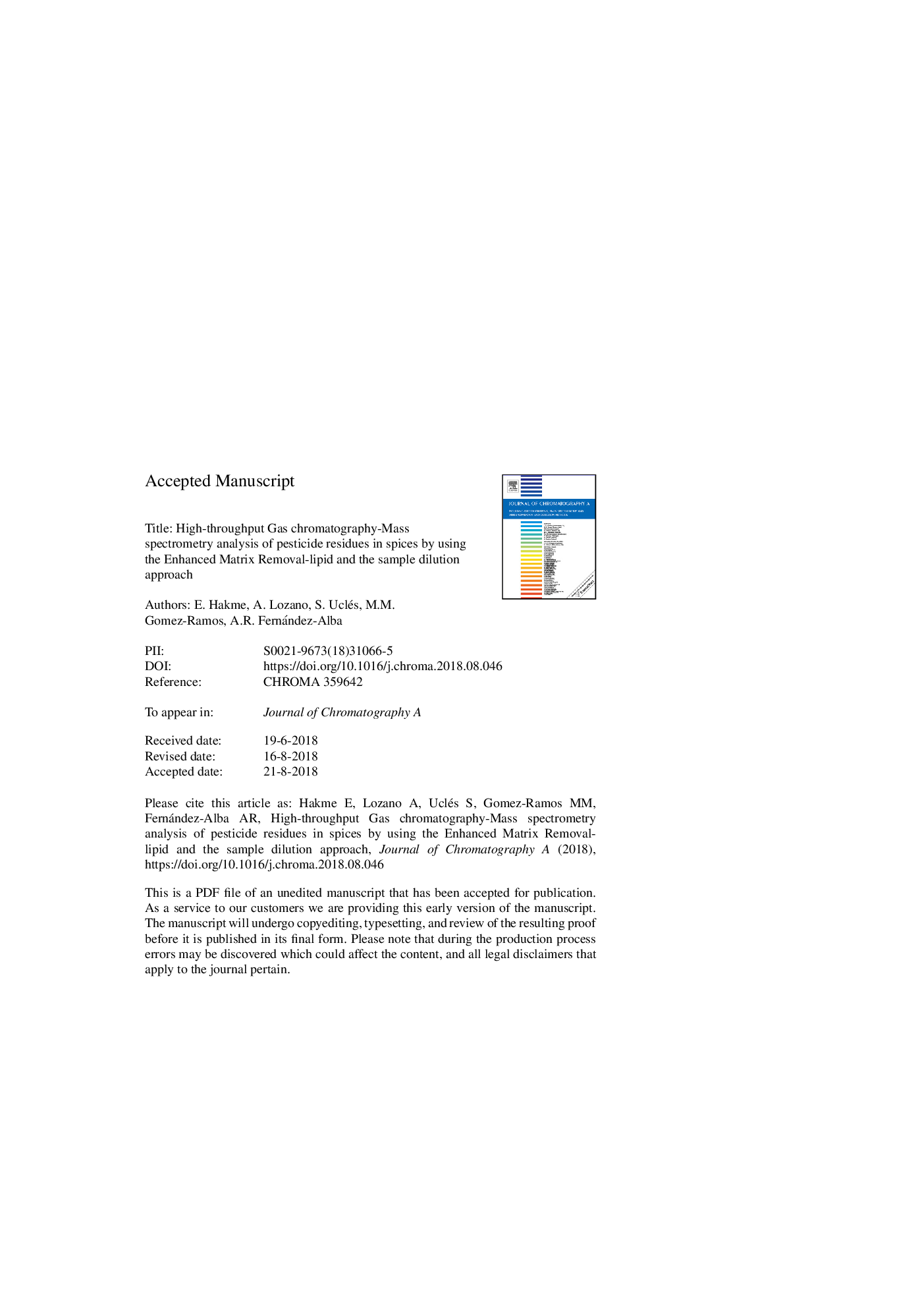| Article ID | Journal | Published Year | Pages | File Type |
|---|---|---|---|---|
| 11016071 | Journal of Chromatography A | 2018 | 38 Pages |
Abstract
Spices are known as difficult matrices that contain variable amounts of fats, piperine or many other matrix constituents. The increasing sensitivity of new GC-MS/MS platforms opens new approaches to analyze pesticide residue in complex matrices such as spices, by sample dilution. The aim of this work is to develop and validate an effective multiresidue method for the analysis of pesticide residues in spices by GC-MS/MS. In this paper, we highlight the importance of reducing matrix interferences generated from co-extractive components of spices. Moreover, we emphasize the concern of obtaining clean extracts requiring less instrument maintenance. By evaluating the total ion chromatograms (TIC) on GC-Orbitrap-MS of different extracts using various sorbents, QuEChERS citrate using EMR-Lipid sorbent resulted in the cleanest extract among Z-Sep, Primary secondary amine (PSA), Oasis® Prime HLB, and Supelclean⢠Ultra cartridges that consist of a top bed of PSA, C18 and Grashsphere⢠2031 and a bottom bed of Z-Sep. Later, the analyses were performed on a GC-QQQ-MS/MS, applying a 15âmin runtime method covering 205 compounds. The samples were diluted 25 times before the injection bearing in mind that the instrumental LOQs reached (iLOQ) were 2ângâgâ1 and the method LOQs (mLOQ) were 50ângâgâ1. Good recoveries between 70 and 120% with RSDs lower than 20% were observed for 90% of the compounds in black pepper and for 83% of the compounds in cayenne pepper. To demonstrate the applicability of the proposed method, 50 real dried and non-dried spice samples were analyzed. The most detected pesticides were metalaxyl, chlorpyrifos, tebuconazole, ethion, and chinomethionate.
Related Topics
Physical Sciences and Engineering
Chemistry
Analytical Chemistry
Authors
E. Hakme, A. Lozano, S. Uclés, M.M. Gómez-Ramos, A.R. Fernández-Alba,
